Reported Aircraft Down In Your 1st Due: Would you know what to do?
Do you live near a small municipal, large commercial or international airport, or even a military air base? Would you know how to respond, what to do, what tactics to employ? Did you know that aircraft are most susceptible to crashing upon take off and landing, ascent and descent? This gives you about a 20 to 30 minute drive time, time frame from the airport. Do you live within that time frame?
Following are some tactics to employ and pointers. I am no ARFF(Airport Rescue Firefighting) expert or ARFF instructor, but I am an ARFF certified firefighter. And I encourage anyone with ARFF experience to contribute to this thread. As well as those with none, ask questions, I'll answer them to the best of my ability, if I can.
You can usually expect one of two things when responding to the report of an aircraft down. One, the aircraft simply made a hard landing and the fuselage is intact, resulting in anything from slight injury to crew and passengers, most being walking wounded, to severe trauma and/or death. Or, two, the aircraft has crashed and you will encounter complete, total and utter carnage, with the probability of survival being minimal. In this case, you will most likely find body parts instead of whole people. Be prepared to see the worst. CISD will need to be employed.
Examples of a hard landing:
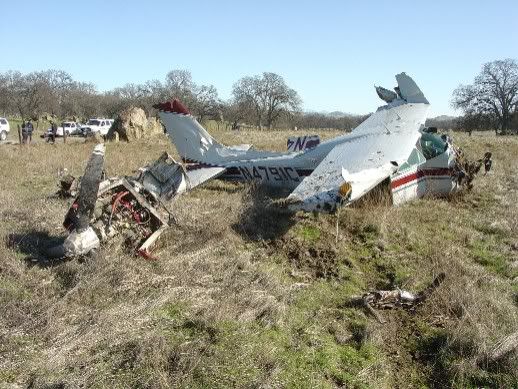
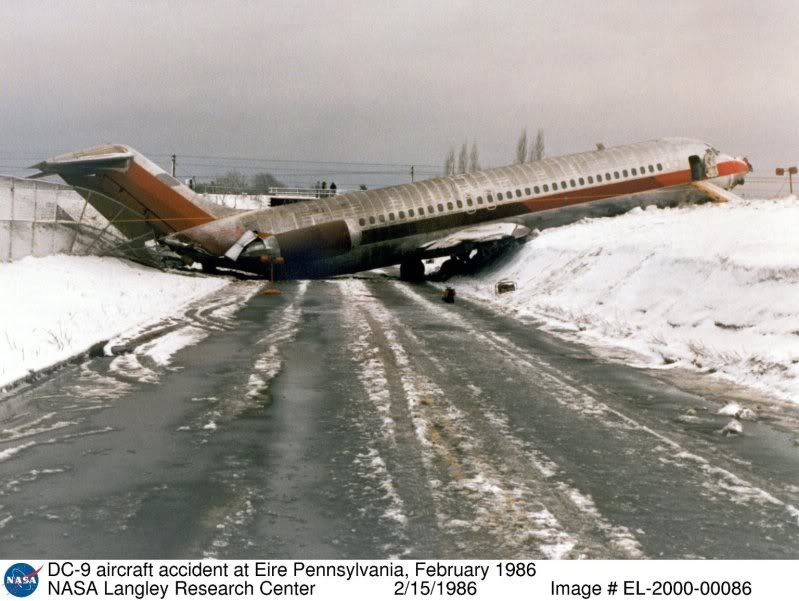

Examples of a crash:
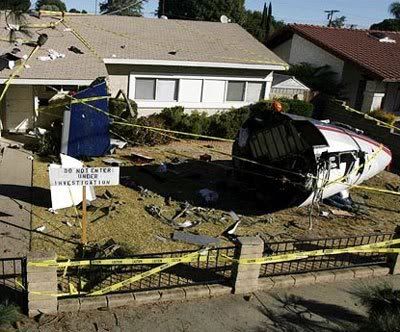
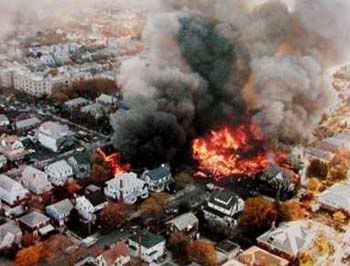
Do not move any pieces of the aircraft unless you absolutely have to, to necessitate a rescue. It needs to be treated as you would a crime scene.
If you encounter an aircraft down with the fuselage intact, with fire involvement, time is of the essence. Burn-through time on aluminum fuselages is usually less than 1(ONE) minute. Make sure you wear your SCBA! Many aircraft today are made with composite materials, as well as aluminum. Composite materials are a known cancer causing agent. Aircraft fires will involve large Class B fires. Class B foam or AFFF will be required. Set up apparatus and attack the fire at a 45º angle from the fuselage, on both sides of the aircraft. A rescue path needs to be cut, and maintained at all times, toward the fuselage with handlines, using the roll-on method to apply the foam.
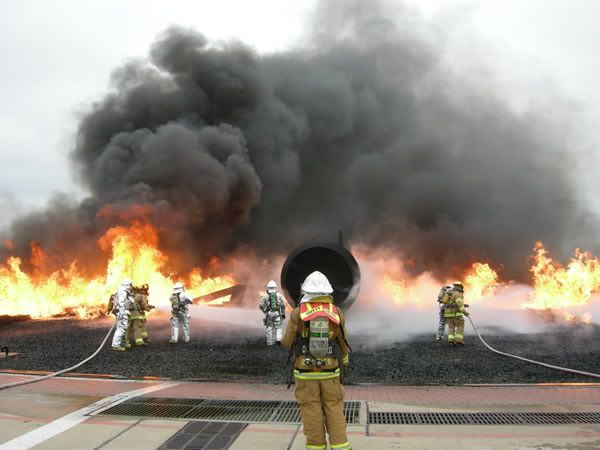
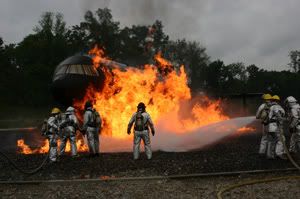
Once you reach the fuselage you need to make entry. Remember, just like a vehicle crash or forcible entry into a structure, try before you pry. Most aircraft doors are clearly marked with easy instructions on how to open the door.

Employ ground ladders, place them directly at the door. Or if there are emergency escape doors over the wing place the ladder as close to the fuselage as possible with the top of the ladder over the wing as you would a structure, two or three rungs. A K-12 saw with a carbide tipped blade is best to use, warthog blades work well, too.
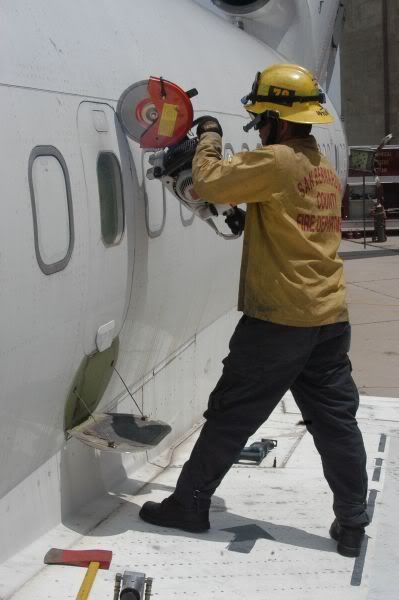
Employ a piercing nozzle if you have one, flood the fuselage passenger compartment, it will buy you time and hopefully keep those inside alive. Foam is not necessarily needed in this instance.
If you encounter an engine nacelle fire, flood the engine. Be very cautious and aware of jet engine intakes and prop aircraft propellers. Approach at a slight angle and keep your distance until the engine has shut down. If the pilot is unable to shut the engines down flooding the nacelle will do so.
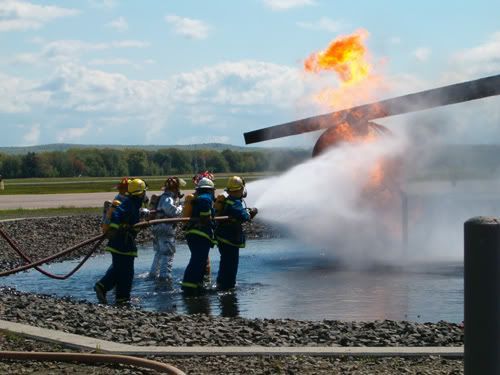
If you encounter an aircraft crash where the fuselage is intact with no fire, but leaking fuel, apply and maintain a thick foam blanket, and take away all ignition sources.
Think big picture, don't hesitate to call for mutual aid and upgrade your alarm. If it's a large aircraft activate an MCI immediately. You will need lots of foam, and lots of manpower. As well as your regular mutual aid, airport and military ARFF units are more than willing to respond and help out. They have the apparatus specifically designed to deal with this type of emergency. Though the ARFF truck is much larger than our normal engines and ladders, they are small enough to drive and navigate city streets and country roads. And they're agile enough to go where our engines and ladders can't, into the wilderness.

Lastly, train with them. Most commercial airport and military airbase ARFF units are more than willing to offer classes and hands on training.
Following are some tactics to employ and pointers. I am no ARFF(Airport Rescue Firefighting) expert or ARFF instructor, but I am an ARFF certified firefighter. And I encourage anyone with ARFF experience to contribute to this thread. As well as those with none, ask questions, I'll answer them to the best of my ability, if I can.
You can usually expect one of two things when responding to the report of an aircraft down. One, the aircraft simply made a hard landing and the fuselage is intact, resulting in anything from slight injury to crew and passengers, most being walking wounded, to severe trauma and/or death. Or, two, the aircraft has crashed and you will encounter complete, total and utter carnage, with the probability of survival being minimal. In this case, you will most likely find body parts instead of whole people. Be prepared to see the worst. CISD will need to be employed.
Examples of a hard landing:



Examples of a crash:


Do not move any pieces of the aircraft unless you absolutely have to, to necessitate a rescue. It needs to be treated as you would a crime scene.
If you encounter an aircraft down with the fuselage intact, with fire involvement, time is of the essence. Burn-through time on aluminum fuselages is usually less than 1(ONE) minute. Make sure you wear your SCBA! Many aircraft today are made with composite materials, as well as aluminum. Composite materials are a known cancer causing agent. Aircraft fires will involve large Class B fires. Class B foam or AFFF will be required. Set up apparatus and attack the fire at a 45º angle from the fuselage, on both sides of the aircraft. A rescue path needs to be cut, and maintained at all times, toward the fuselage with handlines, using the roll-on method to apply the foam.


Once you reach the fuselage you need to make entry. Remember, just like a vehicle crash or forcible entry into a structure, try before you pry. Most aircraft doors are clearly marked with easy instructions on how to open the door.

Employ ground ladders, place them directly at the door. Or if there are emergency escape doors over the wing place the ladder as close to the fuselage as possible with the top of the ladder over the wing as you would a structure, two or three rungs. A K-12 saw with a carbide tipped blade is best to use, warthog blades work well, too.

Employ a piercing nozzle if you have one, flood the fuselage passenger compartment, it will buy you time and hopefully keep those inside alive. Foam is not necessarily needed in this instance.
If you encounter an engine nacelle fire, flood the engine. Be very cautious and aware of jet engine intakes and prop aircraft propellers. Approach at a slight angle and keep your distance until the engine has shut down. If the pilot is unable to shut the engines down flooding the nacelle will do so.

If you encounter an aircraft crash where the fuselage is intact with no fire, but leaking fuel, apply and maintain a thick foam blanket, and take away all ignition sources.
Think big picture, don't hesitate to call for mutual aid and upgrade your alarm. If it's a large aircraft activate an MCI immediately. You will need lots of foam, and lots of manpower. As well as your regular mutual aid, airport and military ARFF units are more than willing to respond and help out. They have the apparatus specifically designed to deal with this type of emergency. Though the ARFF truck is much larger than our normal engines and ladders, they are small enough to drive and navigate city streets and country roads. And they're agile enough to go where our engines and ladders can't, into the wilderness.

Lastly, train with them. Most commercial airport and military airbase ARFF units are more than willing to offer classes and hands on training.
Tags:
Replies to This Discussion
-
Permalink Reply by William Finnelli on January 19, 2010 at 11:17pm
-
One thing that might be a bit usefull to those of you that work and or live near any airport of any type. When you get a chance just go to the fire station on the airfield and ask them whet types of aircraft are generally used at that airport. This will help out if you are first in, and on-scene of a large body A/C, you know you will need manpower or if it's a small personal 2 seater plane you won't need as much manpower. It never huts to know what you might be in for if you are ever call out to a report of an A/C down in your area or called for manpower/ support.
-
Permalink Reply by Doug on January 19, 2010 at 11:32pm
-
Firefighters should attempt to shut down the engine(s) from the cockpit first, throttles, bottles, batteries. If that proves to be impossible, or no one can figure it out, then you flood the nacelle. Either at a slight angle, or from the cut-in area. This slight angle I keep mentioning is a safety factor. I've witnessed this a few times, mostly in training, one time in an actual aircraft fire incident, and there was no catastrophic failure. Is it possible? I don't know, possibly, but I think the odds aren't that great.
-
Permalink Reply by Jay Nicholson on January 20, 2010 at 1:00am
-
I think this would classify as above and beyond. Think MVA with a sheared hydrant. Only instead of water you have raw sewage.
I posted this pic a few days after this incident. HARD landing that sheared off a sewer pump valve.
-
Permalink Reply by Doug on January 20, 2010 at 8:40am
-
Indeed. I think I just threw up in my mouth a little.
-
Permalink Reply by FETC on January 20, 2010 at 10:28am
-
Good post Doug, many things to add to make everyone safer. I always suggest a good NFPA 1003 / FAA or DOD class.
Commercial airliners are designed to fly through a monsoon, therefore you will not flood out an aircraft engine with water from a fire hose as someone may have thought. A/C Doors: Plug type verse Multi Hinge Configurations and the hazards of just 1-2 greater internal pressurization with plug doors you will not get in but woth multi hinge, SABB and Airbus you can over power the latch and be throw out of off the ladder from the gush of air, (Miami incident) All commericial airliner doors swing to the nose, so always ladder "aft" the door (unless you want to take a fall from your ladder) All doors and windows are not outlined in RED, the standard is to have a contrasting color for the outline, SWA for example has some with three different colors to complete the contrast markings due to multi-color paint schemes they have, Door Escape Slides: older grit bar verse the newer auto disconnect from the exterior handle.
One thing I noted on your pictures was the use of ARFF proximity gear and structural gear in conjunction during pit burns, just a side note, I have had structural guys ruin brand new gear, one set actually caught on fire due to the heat being radiated off proximity gear (designed that way) ARFF gear is rated for 932 degrees F for 5 mins NDFC verse structural 523 degrees F for 5 mins NDFC. The guy had taken so much radiant heat from the brother in front of him that all of the velcro melted on the structural gear. (velcro on our PPE is not special, it is the same velcro used on truck tonneau covers or boats and yes, flammable) it dripped down and he had a liquid fire on his leg that burned through his outer shell and half of the inner thermal liner. So unless it is the big bad one, (real incident) training purposes... all entry or attack teams should be paired up with the same gear for safety.
Safety - the photo of the safety officer is not too safe, he is wearing a cop traffic vest that is gonna melt onto his gear and become a candle too.
Would love to chat ARFF sometime.
Bill
FETC
www.fetcservices.com
-
Permalink Reply by Oldman on January 20, 2010 at 10:58am
-
My district is in the immediate approach path for rnys 8 and 9 at George Bush, so we see everything at from commuter to triple 7s. We realize there is a possibility of an incident, but our response would be relegated to exposure and perimeter control, until DPS or NTSB arrives. We don't even begin to have the resources to handle a commercial aircraft incident.
On the other hand, we handle 2 or 3 GA incidents a year, most are a loss of power and off field landing induced ground loops, or the occasional auto rotation hard landing. We know to secure the power, and again maintain the scene until DPS takes over.
-
Permalink Reply by Jonathan on January 20, 2010 at 11:22am
-
Keep in mind that those shiny-silver bunker gear those firefighters are wearing (proximity gear) gives them more protection when dealing with the intense heat of those massive aircraft fuel fires. However, they are called proximity because you can only get within a proximity of the fires for a certain amount of time. They are not fire entry suits (even those are only meant to be in total flame involvement for a short period of time) Remember how hot of temperatures your own bunker gear can withstand. The main job of ARFF is maintaining that rescue path, its the job of the flight crew to ensure everyones safety. Always, in this job, expect the unexpected, and remember that the situation can change at any given moment.
-
Permalink Reply by Capt.Alex Arnold on January 20, 2010 at 11:58am
-
EXCELLENT POST! I would use a blue Warn lamp on a green fire truck with morning pride gear.... J/K ;) These are the types of post I personally love seeing on here. Well structured, great photos, good interaction, BRAVO ZULU Doug.
Now about this whole flooding the engines issue. I too am a certified ARFF my experiences is primarily with wildland helicopters though. We were taught this technique also. It is a last resort tactic though. The idea behind this tactic is the pressure of the water stream disturbing and bending the fins not so much "flooding". This can cause a catastrophic failure (reason why it is the last resort) and there well be parts flying. This tactic should be used only if it is recognized has a threat and needs to be shut down. More times than not though the engine will be down and off by the time we as non-ARFF responders arrive on scene.
Keep up the good work Doug.
Be safe and learn something new everyday.
-
Permalink Reply by Wade Seely on January 20, 2010 at 12:16pm
-
Great post doug.
We had a call a couple of years ago for a field fire, got on scene to start operations when three men came stumbling out of the field; they had just crashed a cesna. that is about the last thing we expected. Luckily they only had minor injuries, and we got the fire out in short order.
TCSS
-
Permalink Reply by FETC on January 20, 2010 at 3:04pm
-
Just to clarify the gear issue: structural, proximity and entry suits are all different. Proximity gear is structural gear with added proximity protection with aluminumized silver outer shell on top of gear, the greater protection is from radiating heat instead of the structural gear design of absorbing heat until max capacity. The proximity gear is better. Proximity gear is designed NOT just for exterior "proximity" tactics, the gear is easy to move in, thus aggressive suppression or rescue operations will find ARFF firefighters in "proximity" gear inside the aircraft as well. Fire Entry suits bulky, and are completely different.
The exterior tactics, should your airport have an ARFF department, is to use the features of the crash truck to establish either mass application of water/foam or a rescue path with turret operations, and then once the fire is knocked down, stretching lines to clean up or make entry for complete extinguishment.
- ‹ Previous
- 1
- 2
- 3
- Next ›
Specialty Websites
Find Members Fast
Firefighting Videos
© 2025 Created by Firefighter Nation WebChief.
Powered by
![]()
Badges | Contact Firefighter Nation | Privacy Policy | Terms of Service